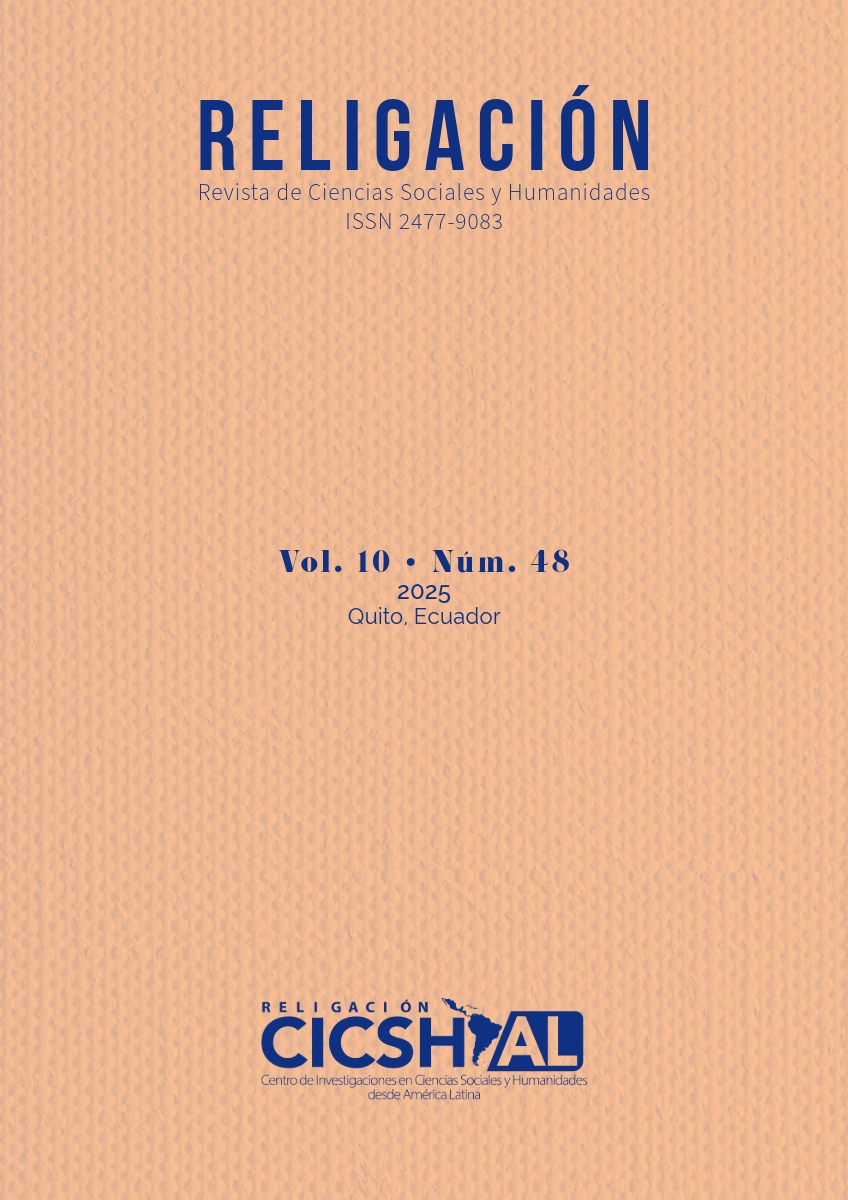Ergonomic risks in workers of savings and credit cooperatives, as the key to well-being in a collaborative environment in the city of Guaranda-Ecuador
Abstract
This study investigated the ergonomic risks faced by credit union workers in the city of Guaranda, Ecuador, in order to understand their impact on occupational wellbeing in a collaborative environment. The main objective was to identify and evaluate these risks, considering their influence on the health and productivity of the personnel. The methodology was based on a qualitative approach, with a systematic review of scientific literature of the last five years, under the subjective-interpretative paradigm and exploratory level. Theories such as AMO, Herzberg, McGregor, self-determination and work adjustment were applied to theoretically support the research. The main findings show that factors such as poor posture, physical discomfort, work stress and lack of active breaks have a direct impact on the well-being of workers, generating musculoskeletal disorders and affecting their performance. In conclusion, the need to implement ergonomic strategies and continuous monitoring systems in these cooperatives to improve occupational health, comply with current regulations and promote a healthy work environment is highlighted. This study seeks to contribute to the academic and labor community with practical recommendations that strengthen the quality of life and performance of personnel in the cooperative financial sector.
Downloads
Metrics
References
Bakker, A. B., & Demerouti, E. (2017). Job demands–resources theory: Taking stock and looking forward. Journal of Occupational Health Psychology, 22(3), 273–285.
Betancourth, C. (2024, 13 de agosto). Mala postura: Consecuencias en la salud. Mejor con Salud. https://mejorconsalud.as.com/mala-postura-consecuencias-la-salud/
Cala, D. (2020). Ajuste persona-entorno laboral [Trabajo de grado, Universidad ECCI].
Chappel, S. E., Verswijveren, S. J., Aisbett, B., Considine, J., & Ridgers, N. D. (2019). Nurses’ occupational physical activity levels: A systematic review. International Journal of Nursing Studies, 94, 66–82. https://doi.org/10.1016/j.ijnurstu.2019.02.012
Cueto, I., & Pauccar, O. (2022). Satisfacción laboral y clima organizacional [Tesis de licenciatura, Universidad Científica del Perú].
Delgado, S., Jaramillo, A., & Rovayo, V. (2021). Condiciones de trabajo y satisfacción laboral [Trabajo de grado, Universidad ECCI].
Granada, A. (2023). La insatisfacción laboral: causas y efectos. Lactalis Puleva S.L. https://www.lechepuleva.es/nutricion-y-bienestar/la-insatisfaccion-laboral
Halanocca, S., Palomino, L., & Rupay, K. (2019). Clima organizacional y motivación laboral [Tesis de maestría, ESAN].
Karasek, R., & Theorell, T. (1990). Healthy work: Stress, productivity, and the reconstruction of working life. Basic Books.
Madero, S. (2019). Relación entre satisfacción laboral y compromiso organizacional. Acta Universitaria, 29(1), 1–13.
Masaquiza, Y. (2022). Clima organizacional y desempeño laboral [Tesis de grado, Escuela Superior Politécnica de Chimborazo].
Mateos, M., Pérez-García, J., & López, R. (2024). Versión en español del Nordic Musculoskeletal Questionnaire: adaptación transcultural y validación en personal auxiliar de enfermería. Revista Española de Salud Pública, 98(3), 223–234.
Medina, N. (2019). Ajuste persona-entorno laboral y su relación con la satisfacción laboral y vital [Tesis de máster, Universidad de La Laguna].
Palacios, D. (2023). Clima organizacional y desempeño docente [Tesis de maestría, Universidad Técnica de Ambato].
Patlan, J. (2019). Satisfacción laboral y factores asociados en docentes universitarios. Revista de la Facultad Nacional de Salud Pública, 37(1), 1–9.
Peiró, J. M., & Rodríguez, I. (2008). Estrés laboral, liderazgo y salud organizacional. Papeles del Psicólogo, 29(1), 68–82.
Pronk, N. P., Katz, A. S., Lowry, M., & Payfer, J. R. (2012). Reducing occupational sitting time and improving worker health: The Take-a-Stand Project, 2011. Preventing Chronic Disease, 9. https://doi.org/10.5888/pcd9.110323
Punnett, L., & Wegman, D. H. (2004). Work-related musculoskeletal disorders: The epidemiologic evidence and the debate. Journal of Electromyography and Kinesiology, 14(1), 13–23. https://doi.org/10.1016/j.jelekin.2003.09.015
Salanova, M., Llorens, S., & Cifre, E. (2016). The dark side of technologies: Technostress among users of information and communication technologies. International Journal of Psychology, 51(4), 271–281. https://doi.org/10.1002/ijop.12185
Sánchez, E. (2022). Bienestar laboral y desempeño profesional [Tesis de maestría, Universidad Tecnológica Indoamérica].
Silva, M. (2022). Factores psicosociales y clima laboral [Tesis de grado, Universidad Técnica de Ambato].
UBITS. (2024, 26 de septiembre). La importancia de las pausas activas en el trabajo. UBITS Team. https://www.ubits.com/blog/importancia-pausas-activas-en-el-trabajo
UNIR. (2024). Bienestar laboral: claves para la productividad. Universidad Internacional de La Rioja. https://www.unir.net/revista/empresa/bienestar-laboral/
Copyright (c) 2025 Grace Lizeth Wilcaso Barragan, Juan Carlos Garate Aguirre

This work is licensed under a Creative Commons Attribution-NonCommercial-NoDerivatives 4.0 International License.











